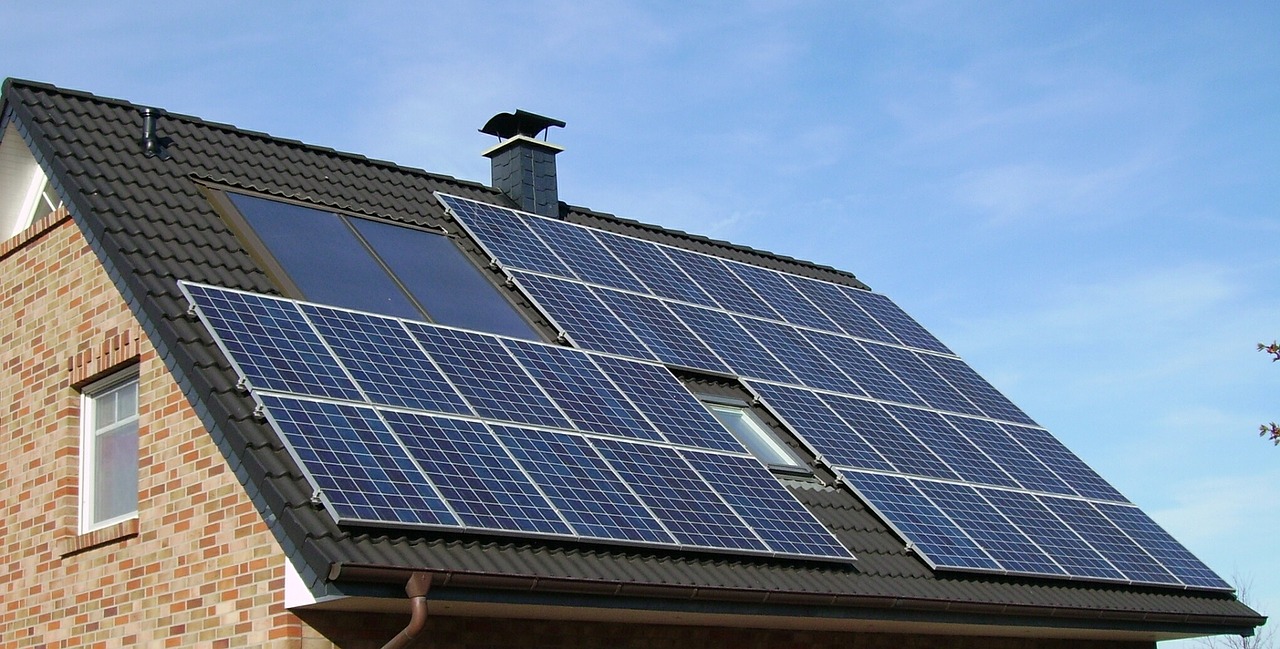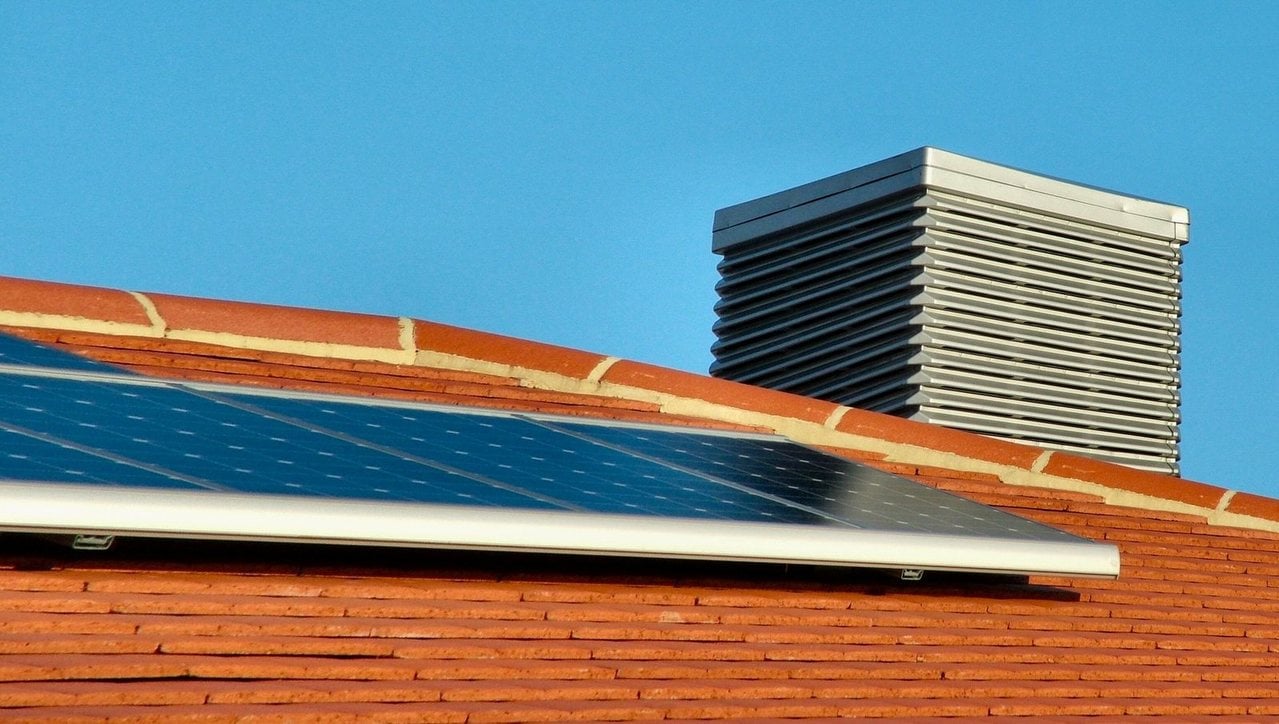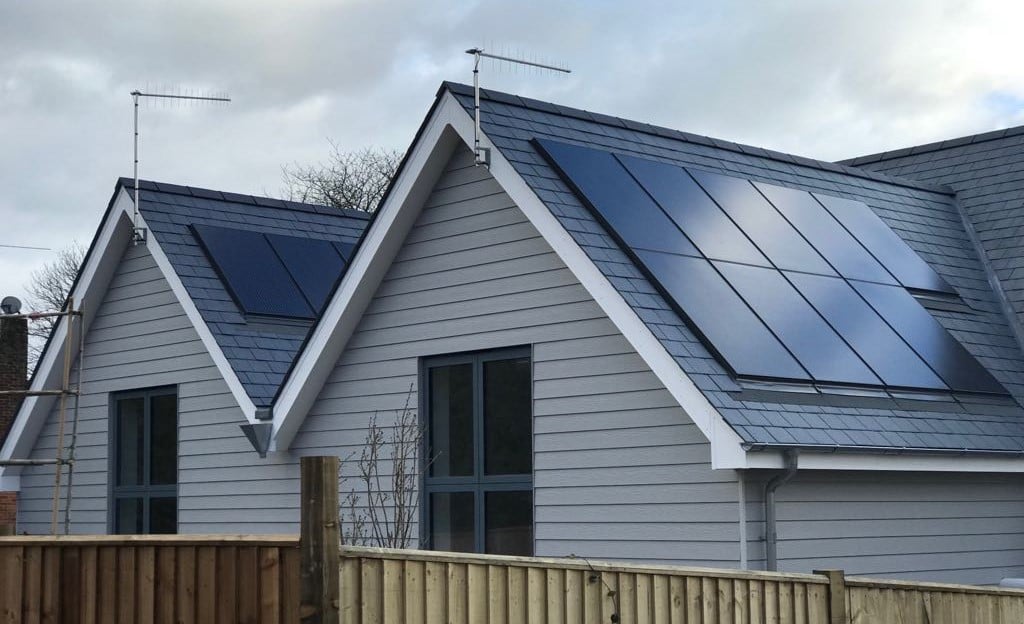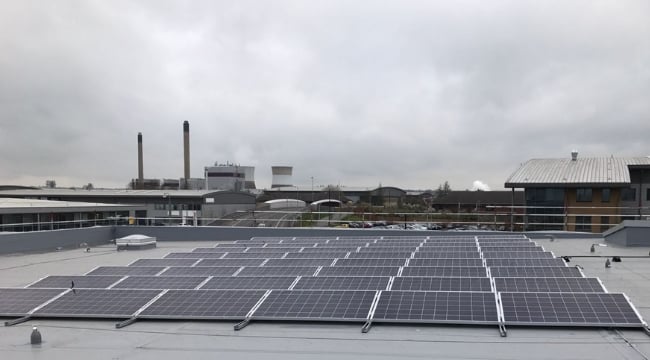
The majority of our customers install PV on their roofs, rather than building integrated or ground mount systems. The benefits of rooftop solar panels are they make good use of otherwise empty space, while keeping the array safely beyond reach and out of most common shading. We’ll take a look at the different types of PV you can choose depending on the roof type.
There are three ways of installing solar on a tiled roof:
Most people are installing systems to their existing house (‘retrofit’) and choose to attach panels onto the roof using mounting brackets.
For new build or re-roof situations, or where there may be an issue with planning (e.g. a conservation area), an in-roof mounting system or solar roof tiles may be the solution of choice.
Installing panels on roof is the most common method, making use of existing roof space. It’s cost effective and provides benefits for performance through ventilation around the back of the panels.

Once the area of the array is mapped out on the roof, a few select tiles are removed.
In these gaps, anchors or hooks are attached to the roof rafters.
A weatherproof seal is applied around these.
The tiles are put back into place, with the hooks coming out below them.
A metal frame or rails hooks onto the anchor points.
The PV panels are fitted to the frame.
The array’s wiring is connected.
In-roof systems use the same panels as on-roof systems. The only difference is that the panels are mounted on the battens/rafters, not on the tiles (usually with a metal tray backing between the panels and the rafters). The roofer will then tile up to the panels, often using lead flashing to make a tight seal around the panels.

In general we don’t recommend in-roof systems for existing roofs, for several reasons:
On a new roof, however, integrated panels are well worth considering. They’ll save you money on roofing materials and can offer a more streamlined, intentional appearance. You may even choose to go for a complete solar panel roof.
If you want your system to sit flush with the surrounding tiles and to blend seamlessly into the roof, you may prefer to use solar roof tiles. These are much more expensive than an on-roof or in-roof systems, but could be a better bet if you are particularly worried about aesthetics.
In some ways flat roofs offer a simpler starting point for installing a solar system than sloping roofs, but they come with their own considerations:

If you’re considering developing the eco credentials of your building with a green roof, you may be surprised to find you can also install PV on top. Together they form a biosolar roof, where the panels are fitted with specialist mounts, ballasted by the soil.
You won’t generate as much electricity as a standard rooftop system, since the panels need to be higher and spaced further apart to allow space for the vegetation. But the greenery will lower the ambient temperature, helping the PV work more efficiently. And in return, the panels will provide shading and concentrated areas of rainfall for greater biodiversity.
The price of solar PV will vary depending on location, ease of access and wiring, panel type etc. But here is a rough guide to compare the cost per kW of different mounting systems, based on a 16 panel domestic array.
|
Mounting type |
Average cost per kWp (ex. VAT) |
|
On roof |
£1,000-£1,850 |
|
In roof (new build) |
£1,200-£1,800 |
|
In roof (retrofit) |
£1,325-£1,950 |
|
Solar tiles |
£3,050 |
|
Flat roof |
£1,500-£2,000 |
|
Ground mount |
£1,900-£2,250 |
The range is estimated using polycrystalline panels, string inverters and standard access/labour costs at the lower end, to monocrystalline panels, optimisers and higher access/labour costs at the higher end. Please get in touch for an accurate quote.
Planning a rooftop array involves optimising for the current roof structure and surrounding environment (potential shading etc). Our expert team has designed thousands of systems and would be happy to assist you with your project. Give them a call on 0118 951 4490, email info@spiritenergy.co.uk or try our solar calculator to estimate what you could generate from your roof:
Copyright © Spirit Energy 2025 · info@spiritenergy.co.uk · 0118 951 4490
Jobs and Careers
Interested in joining the Spirit team? Email jobs@spiritenergy.co.uk
Spirit House, 25 Albury Close, Reading, RG30 1BD
(Location formerly known as 44 Portman Road, Reading, RG30 1EA)
Spirit Energy is the trading name of Spirit Solar Ltd · UK Company Number 07138647
Although care is taken to ensure that the information on our website (www.spiritenergy.co.uk) and any guides, calculators or checklists provided by us, electronically or otherwise, are accurate and up-to-date, we cannot accept any responsibility for mistakes or omissions. We enter into no express or implied conditions, warranties, terms or representations regarding the quality, accuracy or completeness of the information. We exclude to the extent lawfully permitted all liability for loss or damage, whether direct, indirect or consequential arising out of your use of our website or any guides, calculators or checklists provided by us, or from any information or omission contained in our website or any guides, calculators or checklists provided by us.